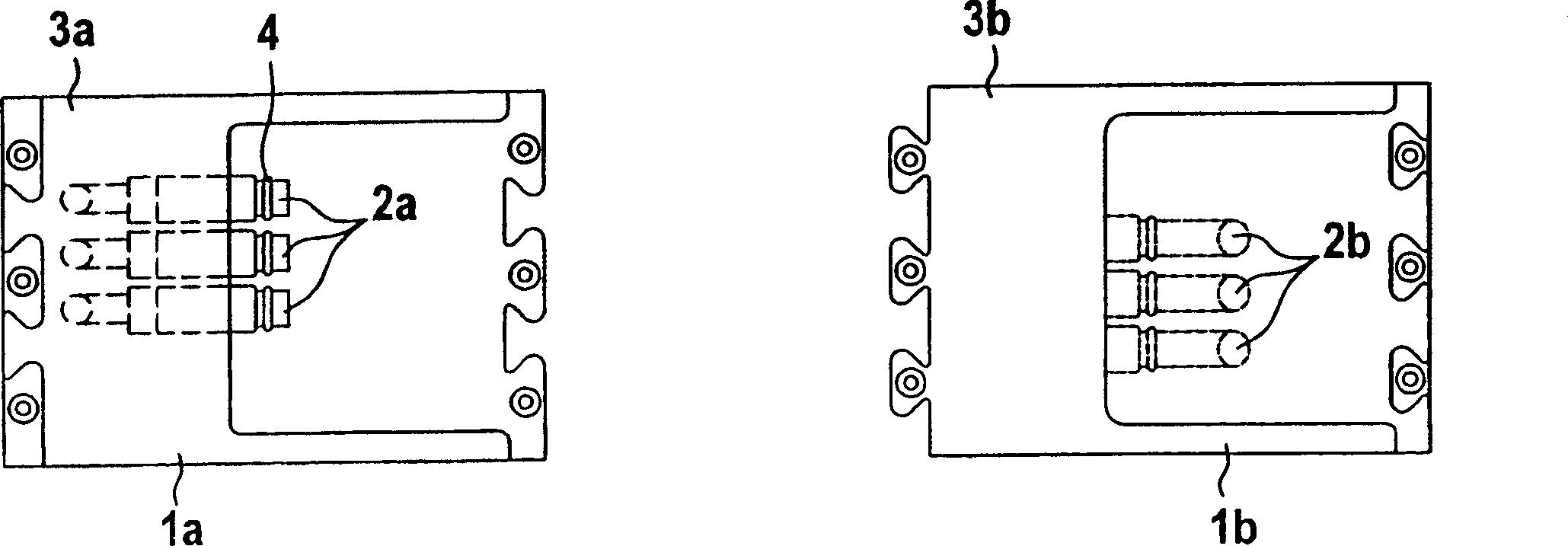Connecting element for mechanically connecting components
A technology of building components and mechanical connections, applied in building construction, connection, construction, etc., can solve problems such as difficulty in reducing on-site costs, shortening of construction time, installation speed and operation quality, etc., so as to save installation time and improve quality , the effect of a simple structure
- Summary
- Abstract
- Description
- Claims
- Application Information
AI Technical Summary
Problems solved by technology
Method used
Image
Examples
Embodiment Construction
[0053] Figure 1 is a schematic diagram of a first embodiment of the present invention, where symbols 1a and 1b denote wall portions in which connecting lines are provided, said connecting lines consisting of a number of plugs 2a and a matching number of joints 2b. The plug 2a is fixed in an assembly seat 3a, and the connector 2b is fixed in an assembly seat 3b. These mounts are fixed in corresponding grooves in the wall section. The recess is formed in such a way that the wall parts can be plugged together and form a complete wall part in the joined state. Figure 1a A side view of two grooved wall parts 1a and 1b is shown, in which mounting seats 3a and 3b are fixed by screwing. Those skilled in the art clearly know that the fixing of the assembly seats 3a and 3b can be achieved in various ways, therefore, further description on this aspect can be omitted. Figure 1b A top view of the invention is shown, in which three line plugs 2a and three line half-connections 2b can be ...
PUM
 Login to View More
Login to View More Abstract
Description
Claims
Application Information
 Login to View More
Login to View More - R&D
- Intellectual Property
- Life Sciences
- Materials
- Tech Scout
- Unparalleled Data Quality
- Higher Quality Content
- 60% Fewer Hallucinations
Browse by: Latest US Patents, China's latest patents, Technical Efficacy Thesaurus, Application Domain, Technology Topic, Popular Technical Reports.
© 2025 PatSnap. All rights reserved.Legal|Privacy policy|Modern Slavery Act Transparency Statement|Sitemap|About US| Contact US: help@patsnap.com



